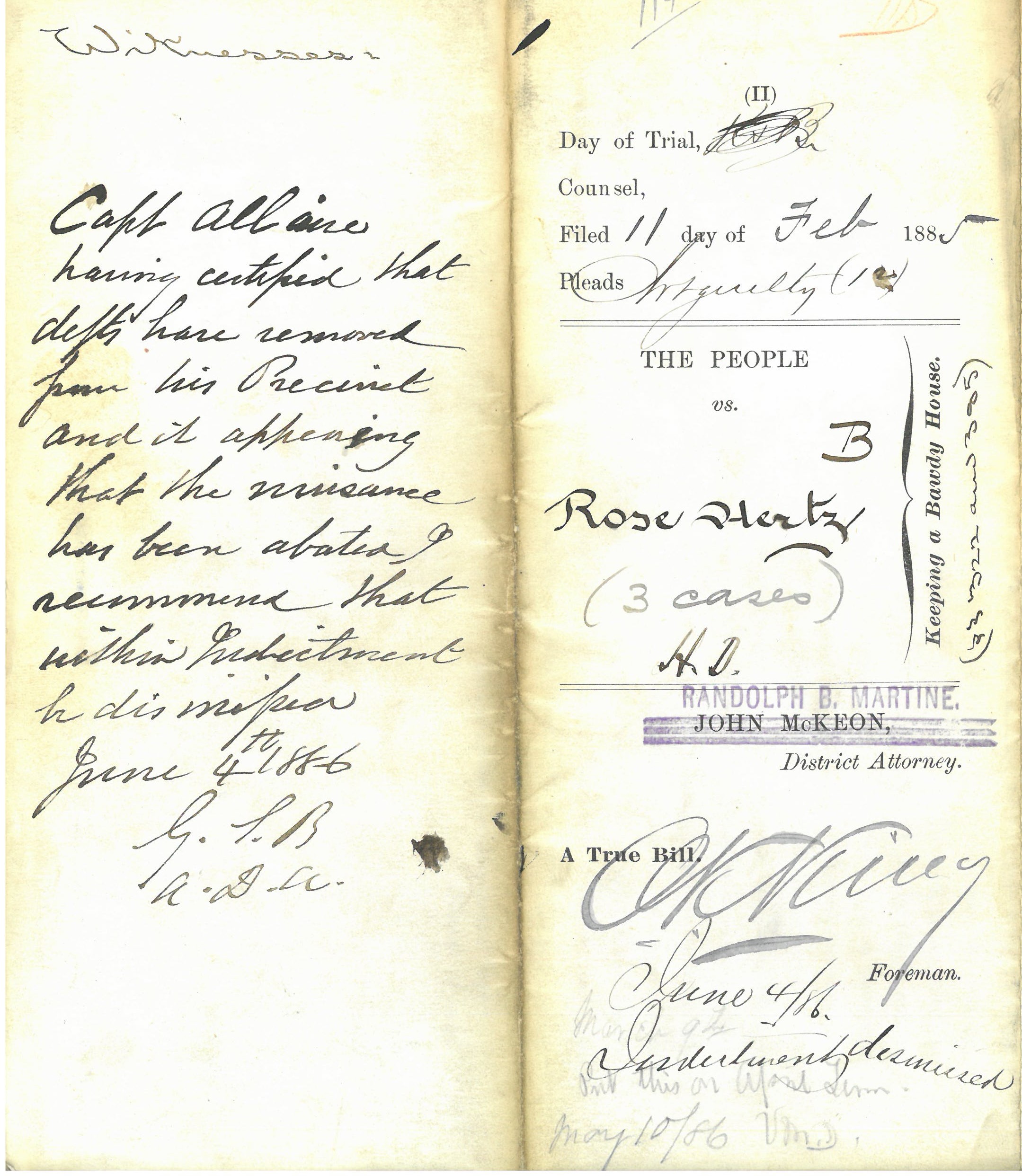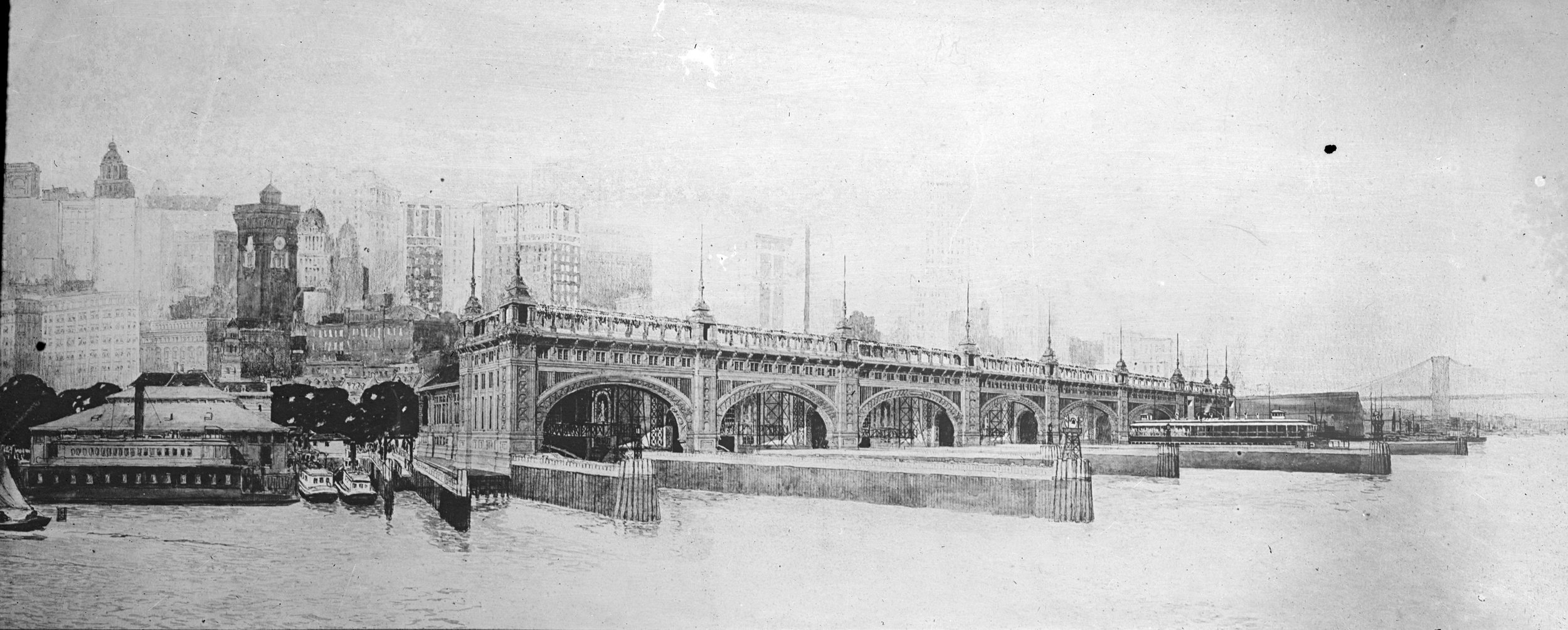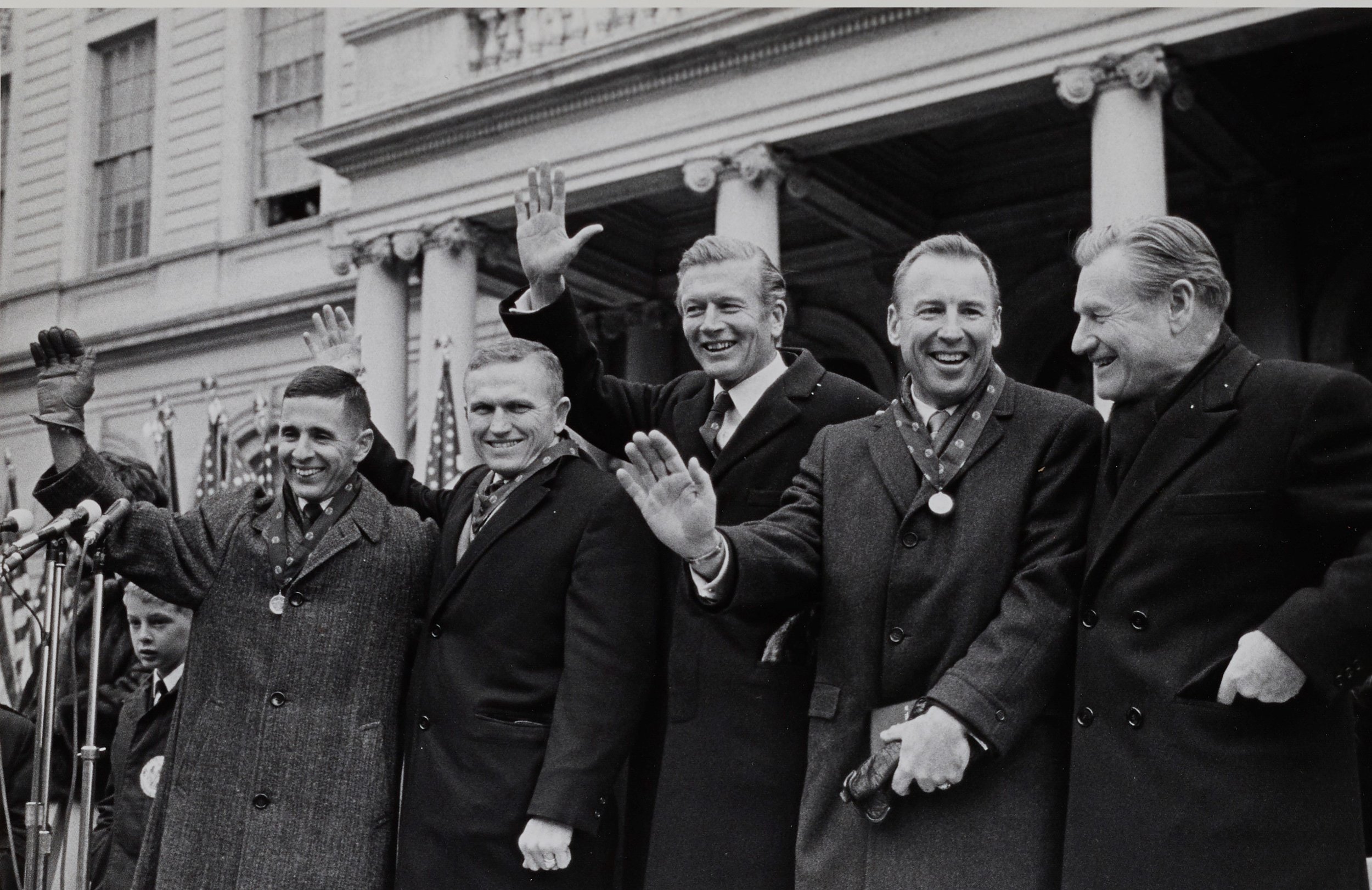Prostitution has long been called the “World’s Oldest Profession.” It also is the most resilient.
In New York, it begins in Colonial times, stretches through the Civil War Era, the “Halcyon Days” of the bawdy mid-1880s, to police corruption and Tammany Hall protection at the turn of the 20th Century, the sensational “Lucky” Luciano prostitution trial in the 1930s, and the Bad Old Days of the 1970s and 1980s when teenage hookers and “Live Sex” porn palaces clogged Times Square.
It has survived and thrived despite periodic crackdowns, blue-ribbon investigations and “clean up” drives. Laws have been passed with varying results and there have been repeated calls to legalize it—as recently as June, when several State lawmakers introduced legislation to decriminalize it.
Yet it persists.
The Municipal Library and Archives collections provide a wealth of documentation on the periodic fights to control prostitution. There are court records dating back to the 1800s, reports from civic organizations, City agency publications, books and correspondence from several mayors including Ed Koch and Rudy Giuliani.
“Over the past four decades, successive city administrations have made repeated attempts to ‘clean up’ Times Square; each new attempt was met by increased skepticism,” the first of two Times Square “Action Plans” declared in 1978.
The timeline was off by a couple of centuries.
The Municipal Library collection includes Timothy Gilfoyle’s meticulously researched book, City of Eros: New York City, Prostitution and the Commercialization of Sex 1790-1920. Gilfoyle drew upon scores of sources in the Municipal Archives, particularly the District Attorney Indictment Papers, dating back to the late 18th Century.
In the years before the American Revolution, prostitutes worked the wharves, entertaining British sailors and local New Yorkers alike. Most of the traffic was in three main areas in what is now known as Lower Manhattan: The “Holy Ground” behind St. Paul’s Chapel, George Street near City Commons—now called City Hall Park—and East George Street, then the northeast fringe of New York City.
“Between 1790 and 1809 … two-thirds of the nearly 200 indictments for prostitution were for illegal activities near the East River docks; 26 percent on East George and George streets alone,” Gilfoyle reports, referring to district attorney records in the Archives.
Citizen outrage over widespread prostitution led to a crackdown, but “by mid-century New York had become the carnal showcase of the Western World.”
In addition to the women who worked the streets, there were an estimated 200 brothels in New York City in 1820. That grew to more than 600 by the end of the Civil War. Over those years, much of the prostitution moved north to “Paradise Square” in Five Points, as well as lower Broadway, the Bowery, Greenwich Village and Chelsea—much of it out in the open and protected by Tammany Hall stalwarts and big street gangs.
Gilfoyle called the period between 1836 and 1871 “the Halcyon Years” of commercialized sex. It was so widely known that one Sunday in 1857, the Rev. William Berrian, rector of Trinity Church, supposedly declared from the pulpit that in his 50 years in the ministry he had not been “In a house of ill fame more than 10 times.”
“THE QUEEN” OF NEW YORK’S MADAMS
New York had its share of so-called “Celebrity” or “Star” madams, but one that stands out was Rosa Hertz, who, with her husband, Jacob, and her brother ran a string of brothels on the Lower East Side on Stanton Street, Ludlow Street and East Ninth Street, and later along Flatbush Avenue in Brooklyn.
Indictment papers in the archives show that Hertz, a one-time prostitute also known as “Rosie,” or “Mother Hertz,” was charged with keeping a bawdy house where one of her prostitutes “did commit whoredom and fornication.” She and her husband were in indicted in May 1886 on charges of “keeping and maintaining a common bawdy house and house of ill fame,” despite claims that she was paying off police for “protection.”
On February 11, 1885, a grand jury indicted “Rose” Hertz for “Keeping a Bawdy House.” The felony prosecution case file includes the Manhattan 3rd District Police Court complaint where one Louis Burger alleges that he “… .was solicited in the premises no 64 Stanton Street for the purpose of prostitution… . ” The file also includes a letter from Police Captain Anthony J. Allaire, stating that to his knowledge Rose Hertz had moved away from the Precinct. In consequence, the Assistant District Attorney in charge of the case recommended that the indictment should be dismissed since the “nuisance” had been abated. New York City Court of General Sessions Felony Indictment Files, 1879-1894. NYC Municipal Archives
The Library also holds biennial reports from the Committee of Fourteen, an anti-saloon civic group, which noted that at one point Hertz “obtained from the courts an injunction to restrain the police from interfering with her.”
The group’s annual report from 1916-1917 called Hertz a longtime “power in the vice district” in Lower Manhattan.”
She was convicted on February 3, 1913 on charges of running a disorderly house on East Ninth Street and jailed in the Tombs. This time, she threatened to name her protectors. A lengthy New York Times article on February 21, 1913, based on statements from then-Manhattan District Attorney Charles S. Whitman, reported: “For twenty years she had run disorderly resorts and built up a big business that made her rich. During all those years she paid fat prices for protection to police and more fat prices to politicians for other favors and because she was squeezed.”
Though the article named several police officials who took money from brothels, it’s unclear whether Hertz delivered on her promise to identify crooked cops and politicians. In any event, a July 6, 1913 Times article headlined “WOMAN WHITE SLAVER GOES TO JAIL” reported: “Sheriff Harberger took yesterday Rosie Hertz, the proprietress of several white slave dens, to Blackwell’s Island to begin her sentence of one year’s imprisonment. Mrs. Hertz has been in the Tombs since February 3 on the promise that she would reveal police graft in the white slave traffic.”
The Times estimated she was worth $105,000 in 1903, which would be about $3 million today.
THE “SOCIAL EVIL” IN NEW YORK
Public outrage had become so vocal by the early 1900s that the Committee of Fourteen was formed to combat “The Social Evil in New York City.”
The Committee, whose reports are in the Municipal Library, noted that in 1905 Park Row and Bowery dives catering to prostitution were “going full blast.” Among them were “The Flea Bag,” “Scottie Lavelle’s,” “Paddy Mullins’,” and “The Little Jumbo.”
It also made a distinction between the higher-class bordellos like Hertz ran and the lower-priced ones where women “were poorly fed and exploited in various ways by the madames and proprietors. When a woman received a patron, the money was immediately turned over to the madame.” Women got half of what they earned, minus board, drinks, doctor’s fees and clothes.
One of its first reports included a chapter on “The Protection of Women” and detailed how prostitution operated in those days despite “feeble” legislative attempts to curb it. The report said the first rung in exploiting women was the “cadet” or pimp. “The cadet is the procurer who keeps up the supply of women for immoral purposes” through “entrapment, threats of bodily harm, seduction, fraud or duplicity.”
Some of the cadets came from the ranks of street gangs with ties to local Tammany Hall politicians. “Small army of vicious young men are used to ... see that houses secure inmates and that vice in general is not allowed to decrease. it is for the profit of these men and of various businesses and political interests which find prostitution valuable.”
Subsequent committee reports described police corruption in detail. A 1907-1908 report claimed that large brothels paid police $400 to $600 a month, corrupt plainclothes cops received $205 and patrolmen got about $184 monthly.
One of the leading books on the topics in the Municipal Library is Commercialized Prostitution in New York City, by George Kneeland, written in 1917. It focuses on information from a 1910 Special Grand Jury probe of “white slave traffic” in New York, creation of the Bureau of Social Hygiene and delves into police corruption.
The book describes several locales for bordellos: “The parlor house, the tenement house apartment, the furnished room house, the disorderly hotel and the message parlor.”
It also describes the pecking order of such places. He wrote that investigators visited 142 parlor houses between January 24, 1912 and November 15, 1912. Of those visited, “20 are known to the trade as fifty-cent houses, 80 as one-dollar houses, 6 as two-dollar houses and 34 as five- and ten-dollar houses.” The remaining two were uncategorized.
Prostitution and Its Repression in New York City, 1900-1931, by Willoughby Cyrus Waterman, 1932.
Another book in the Library that describe the prostitution business and its protectors in the era is Prostitution and its Repression in New York City 1900-1931, by Willoughby Cyrus Waterman.
“It is clearly evident that during the early years of the century the New York police, far from protecting the city from vice, were rather actively engaged in aiding and abetting the very conditions which they were obliged to protect.”
The book noted that police crackdowns often concentrated on low-level operations while leaving the high-class brothels alone. The city created night courts for women in 1910 to handle the ever-increasing volume of prostitution arrests.
In its 1930 report, the Committee of Fourteen said that the turn of the century “corruption in the Police Department was almost general and the main source of that corruption was organized, commercialized vice.”
That corruption wasn’t confined to police, though. In one of its final reports, the Committee felt compelled to make an embarrassing admission—and to issue a public apology: John Weston, an assistant district attorney assigned to the Women’s Court—whom the committee had praised over the years—confessed to accepting “petty cash gratuities” involving 350 to 400 cases.
The Committee of Fourteen disbanded in 1932, when it was no longer able to raise money for its operations.
Four years later, prostitution again captured the public’s imagination with the sensational trial of perhaps the most powerful Organized Crime boss in the country, Charles “Lucky” Luciano.
TO BE CONTINUED ...



















